The Productivity Commission (PC) was never the same after Gary Banks departed as chair in 2013, after leading the organisation from its inception in 1998.
Back then, you could trust the institution to deliver sound advice grounded in evidence. Sadly, the PC has become politicised and lost its way.
It is telling that not one of the five discussion papers released by the Productivity Commission leading into this week’s productivity roundtable even bothered to mention the word “immigration” nor bothered to question the nation’s mad pursuit of ‘net zero’, which guarantees higher energy costs.
Thankfully, the alternative economic reform roundtable held by National Party senator Matt Canavan upstairs in Parliament House was televised to the public and provided genuine commentary on Australia’s malaise.
Professor Gary Banks presented and highlighted the fact that Australia is committing energy policy suicide by abandoning reliable, non-weather-dependent thermal power in favour of expensive, intermittent renewable generation funded by subsidies.
As a result, Banks argued that Australia’s productivity will decline as costs are added through the supply chain, and industry will continue to shift offshore:
“In the case of energy… rather than leveraging the power of markets to discover least cost means of reducing emissions Australia-wide, governments have opted for ad hoc subsidies and regulatory measures without regard for their widely differing costs and significant distortion effects on resource allocation”.
“They’ve adopted targets for emissions and renewables without any clear idea of how to achieve them. And in so doing, they’ve assisted technologies that cannot deliver reliable power while suppressing those that could”.
“Now, the results an increasingly dysfunctional energy system requiring far more capital to produce far less reliable power. It’s the antithesis of the pro-productivity policy governments persist in presenting it as”.
“Now, abundant low-cost energy has traditionally played an important role… in offsetting the detrimental impact on industry performance of Australia’s rigid high cost labor market… It no longer possible for energy to play this role”…
“The impacts of higher costs and reduced labor market flexibility on competitiveness are likely to be particularly damaging for manufacturing”.
“It’s therefore a bit ironic that having ignored or added to such impediments, the government is embarking on a Future Made in Australia pitch for Australia to become a leader in green manufacturing”.
“Even more ironic is the recognition that this could only be achieved with substantial subsidies from the taxpayer”…
The cold hard reality is that Australia’s manufacturing sector has no future so long as energy—i.e., gas and electricity—continues to rise in cost and becomes less reliable.
As illustrated below by Vivek Dhar from CBA, “the decline in the share of manufacturing in Australia’s economy has been faster than advanced economies, reflecting the overall challenges of keeping labour, materials, and energy prices low enough for Australia’s manufacturing sector to remain competitive”.
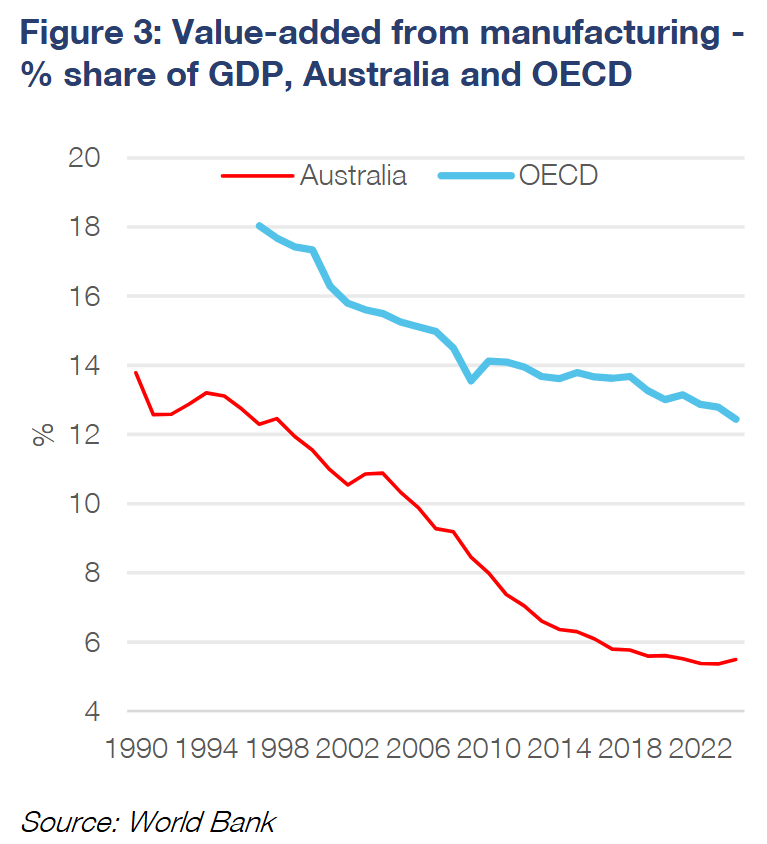
“Manufacturing, excluding the petroleum refining sector, primarily uses natural gas for its energy consumption”, noted Dhar. “Electricity is the second largest energy source, followed by black coal, petroleum products and then more fossil fuels”.
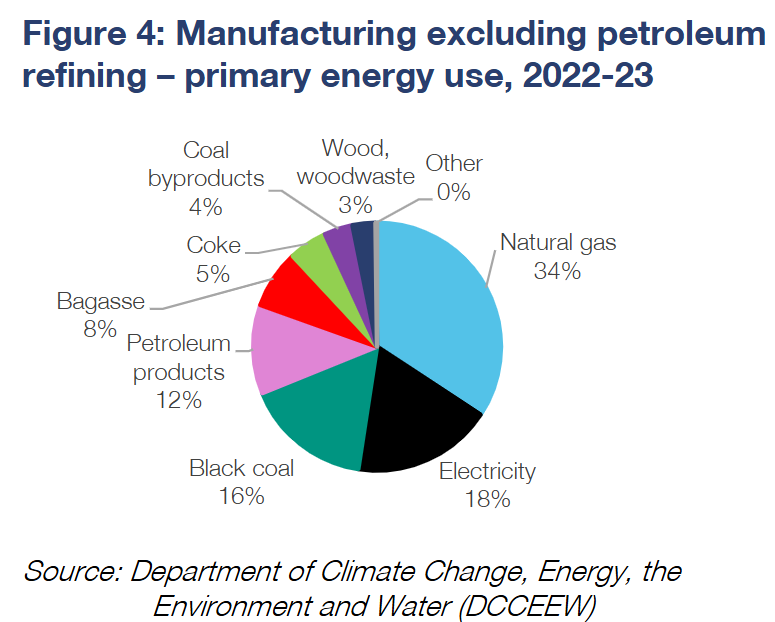
Alex Joiner, chief economist at IFM Investors, encapsulated the manufacturing sector’s energy conundrum with the following chart:

Natural gas input costs in industry have risen by 186% since 2000, while electricity prices have risen by 181%.
The rise in natural gas costs has been especially dramatic since 2022, when Russia invaded Ukraine.
As a result, ASIC insolvency figures showed that over 1400 manufacturers nationwide have failed since 2022-23.
Among these, Incitec Pivot, a large fertiliser company, closed most of its Australian operations due to rising energy costs.
Qenos, Australia’s last major plastics plant, shut down in 2024 due to high gas prices, leaving the country entirely reliant on polymers supplied from China.
Oceania Glass, Australia’s lone architectural glass manufacturer, closed in February after 169 years of business due to rising energy costs and Chinese dumping.
Orica, the world’s largest producer of mining explosives, chemicals, and agricultural fertilisers, and BlueScope Steel have threatened to downsize their Australian operations and relocate to the United States in response to rising energy prices.
Without inexpensive and reliable gas and electricity, Australia’s manufacturing sector will continue to shrink, the country will deindustrialise, and its economy will become less diverse and productive.
Unfortunately, energy prices in Australia will continue to rise.
East Coast Australia’s refusal to develop a domestic gas reservation policy is a major contributor to rising energy prices.
In 2015, the East Coast began exporting natural gas from Gladstone. Since then, the East Coast’s gas output has increased while providing 25% less gas to the domestic market.
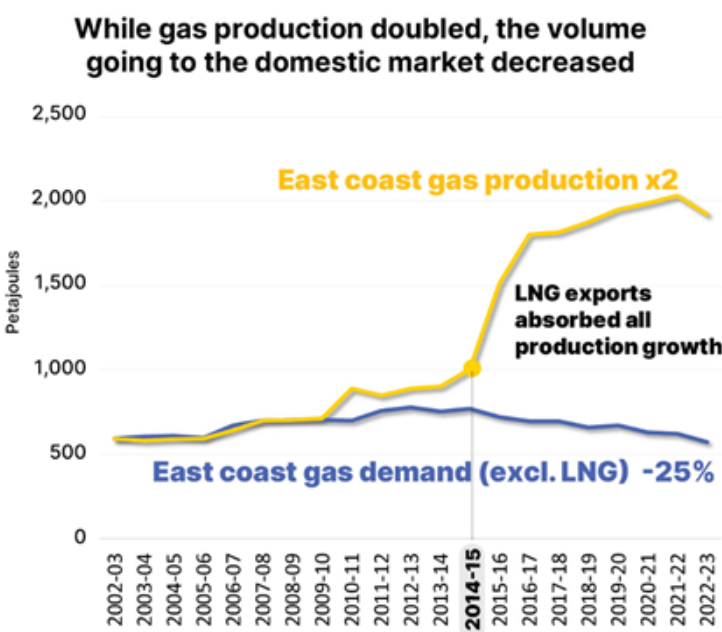
As a consequence, an artificial gas shortage has emerged, increasing East Coast gas prices to approximately $12 per gigajoule.
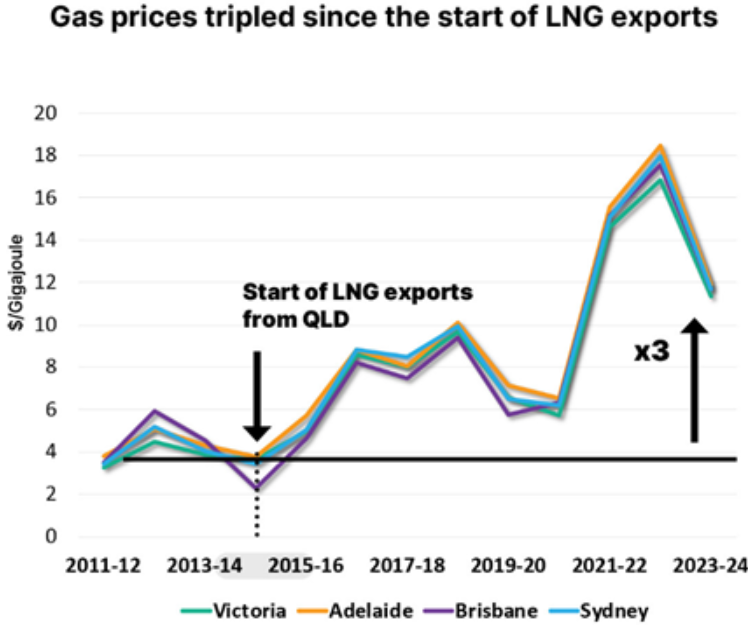
East Coast Australia now has the highest gas prices of any exporting jurisdiction in the world. These high gas costs have contributed to rising electricity prices, as gas is a significant marginal price setter in the wholesale market.
The situation will worsen if the East Coast begins importing gas into New South Wales, Victoria, and possibly South Australia to relieve domestic shortages.
Once liquefied natural gas (LNG) imports commence, East Coast gas prices will rise to import-parity levels of roughly $20 per gigajoule, which will also raise electricity costs.
Implementing a domestic reserve on the East Coast is critical to lowering prices and minimising the negative consequences of LNG imports.
Second, Australia’s pursuit of ‘net zero’ and shutdown of baseload coal facilities will result in higher electricity prices.
Creating a network of renewable energy sources, transmission, and storage will cost hundreds of billions of dollars, which will eventually be reflected in higher power bills and taxes to finance subsidies.
Australia leads the world in coal exports and ranks second in natural gas exports. We export around seven times more coal than we consume as a country, as well as four times more gas.
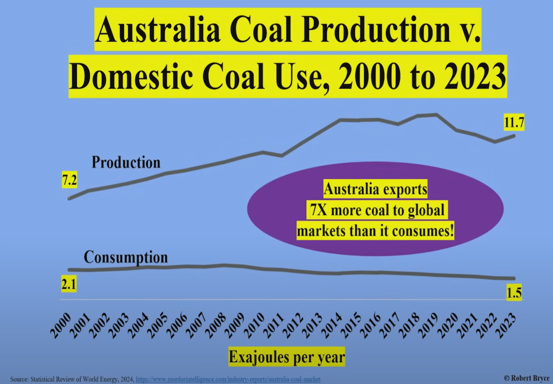
Australia also has the world’s largest uranium deposits.
Australia should have some of the world’s cheapest gas and electricity, but it has chosen to deny itself access to these resources while exporting energy security to Asia, particularly China, which has driven 67% of the rise in the world’s carbon emissions since 2000.
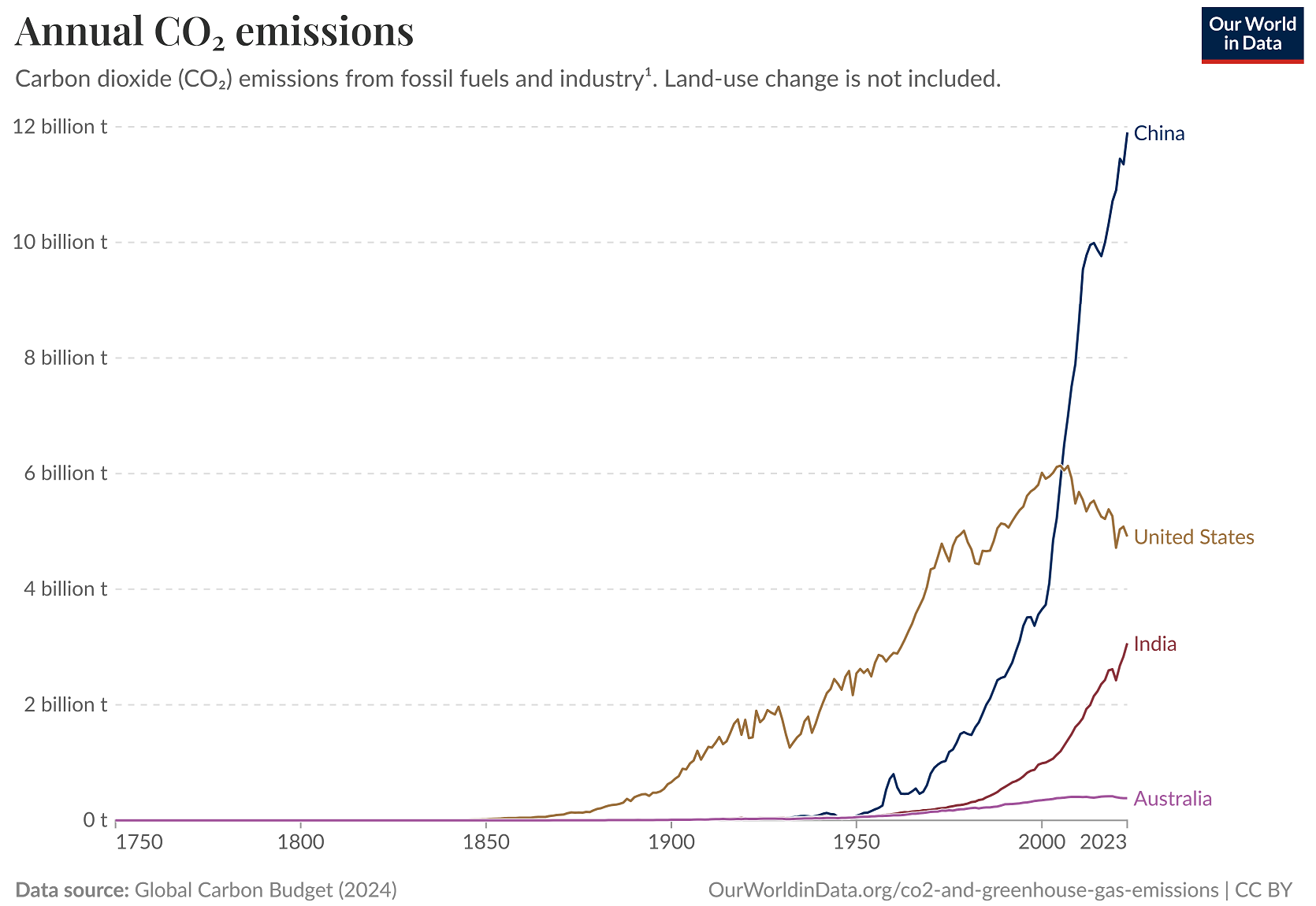
Rising energy costs will negatively impact all Australians, with the manufacturing sector suffering the most.
Australia will become an even larger industrial wasteland, with a less diverse and complex economy, lower productivity, and lower living standards.

